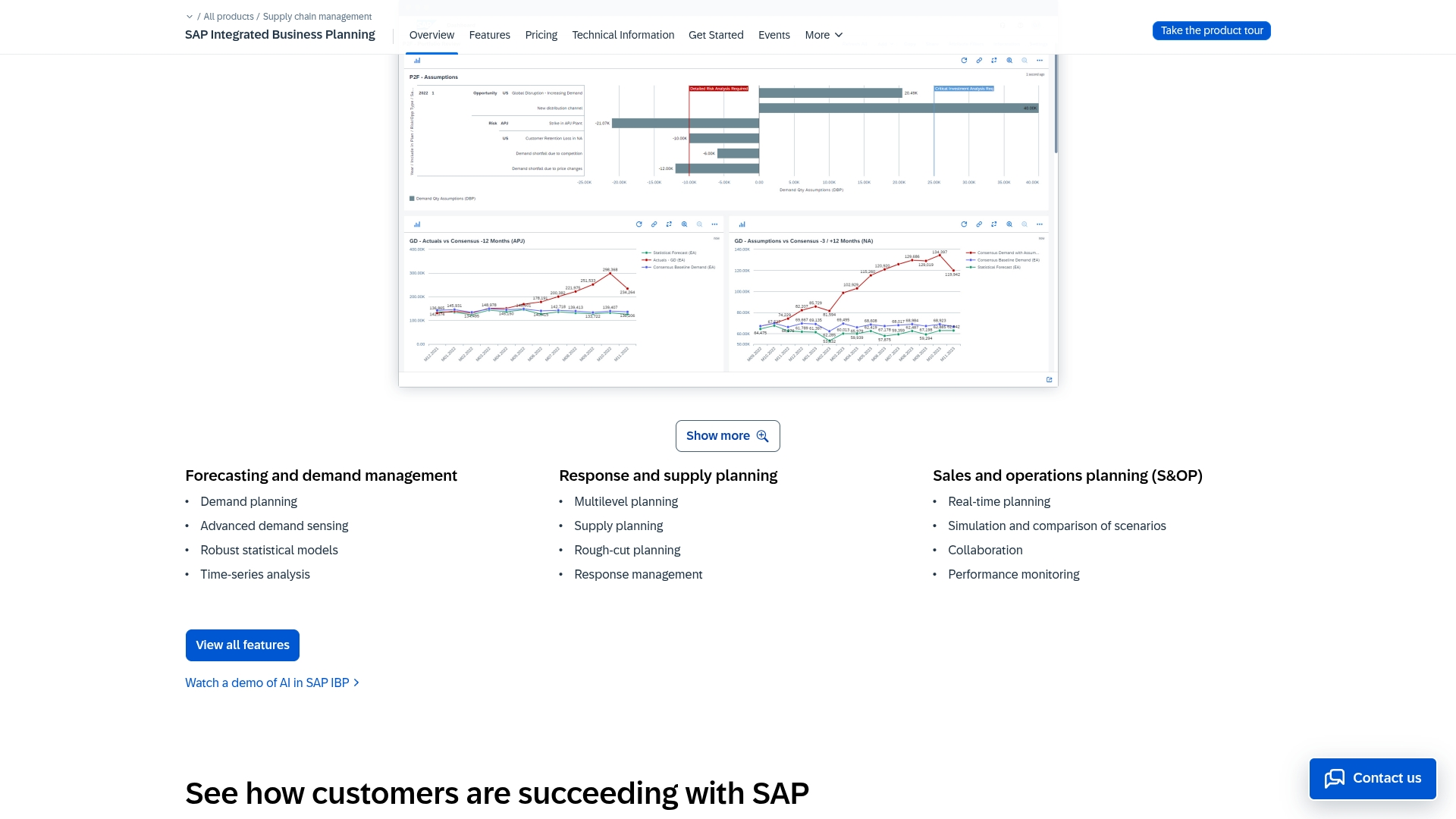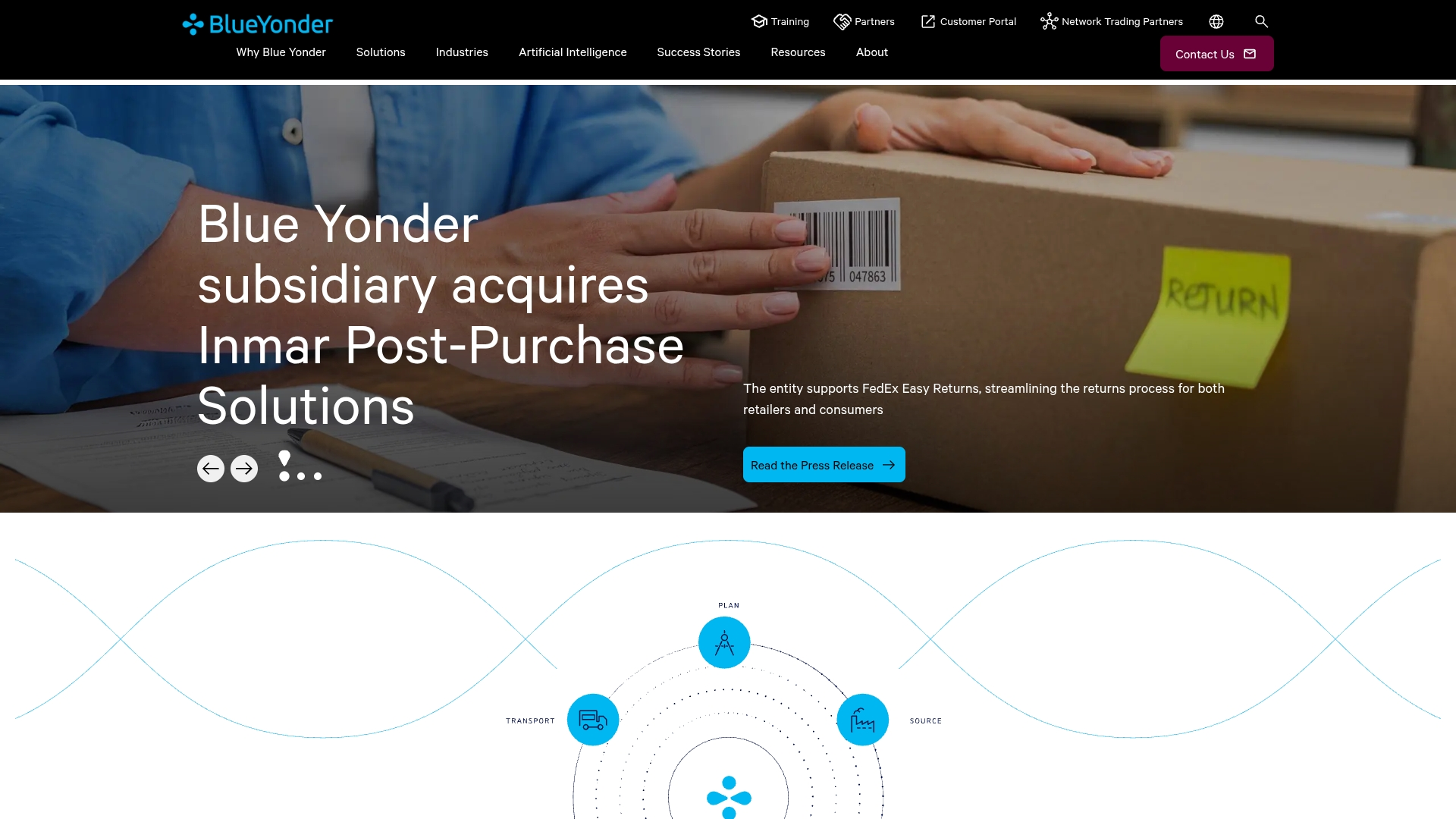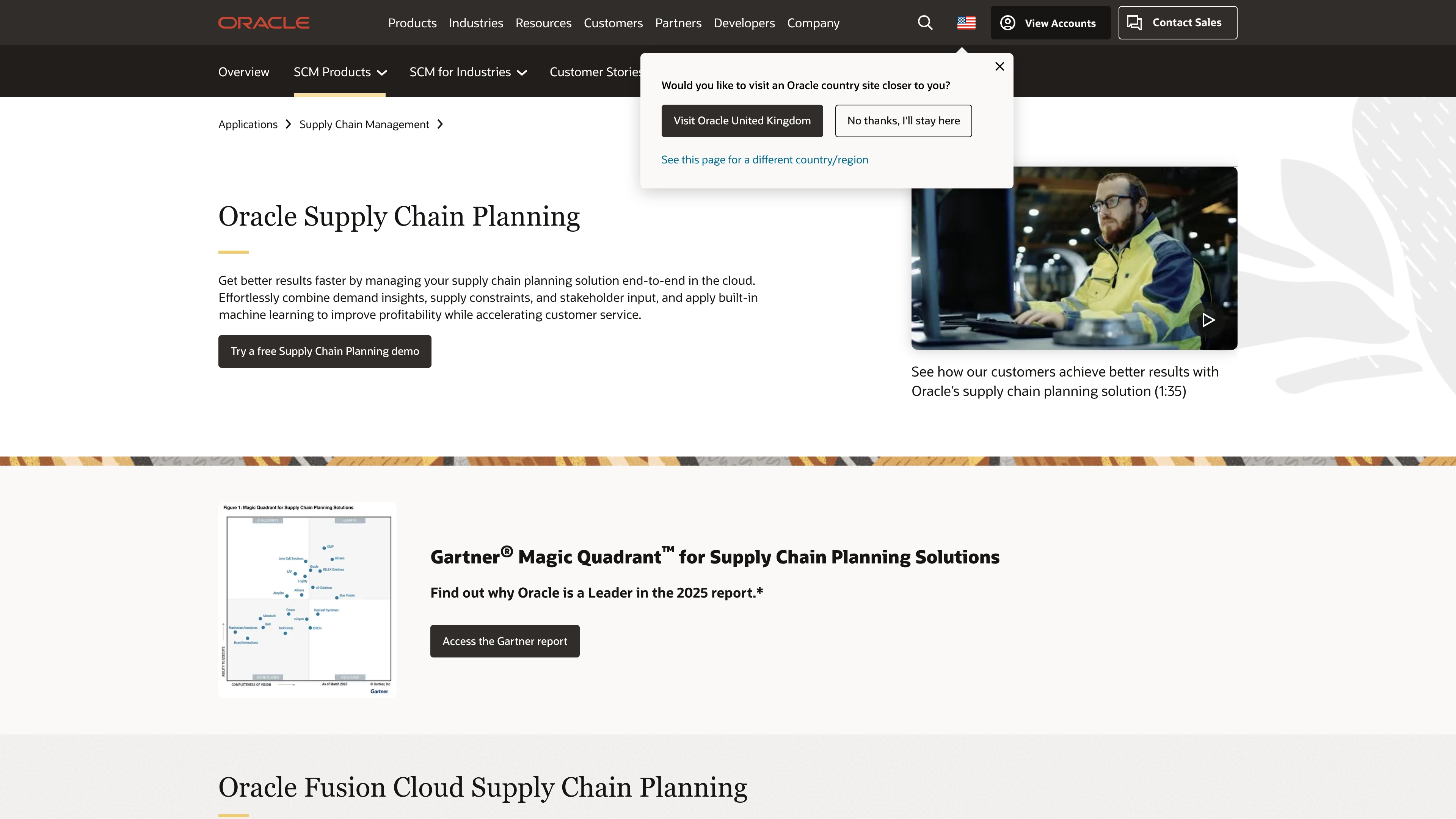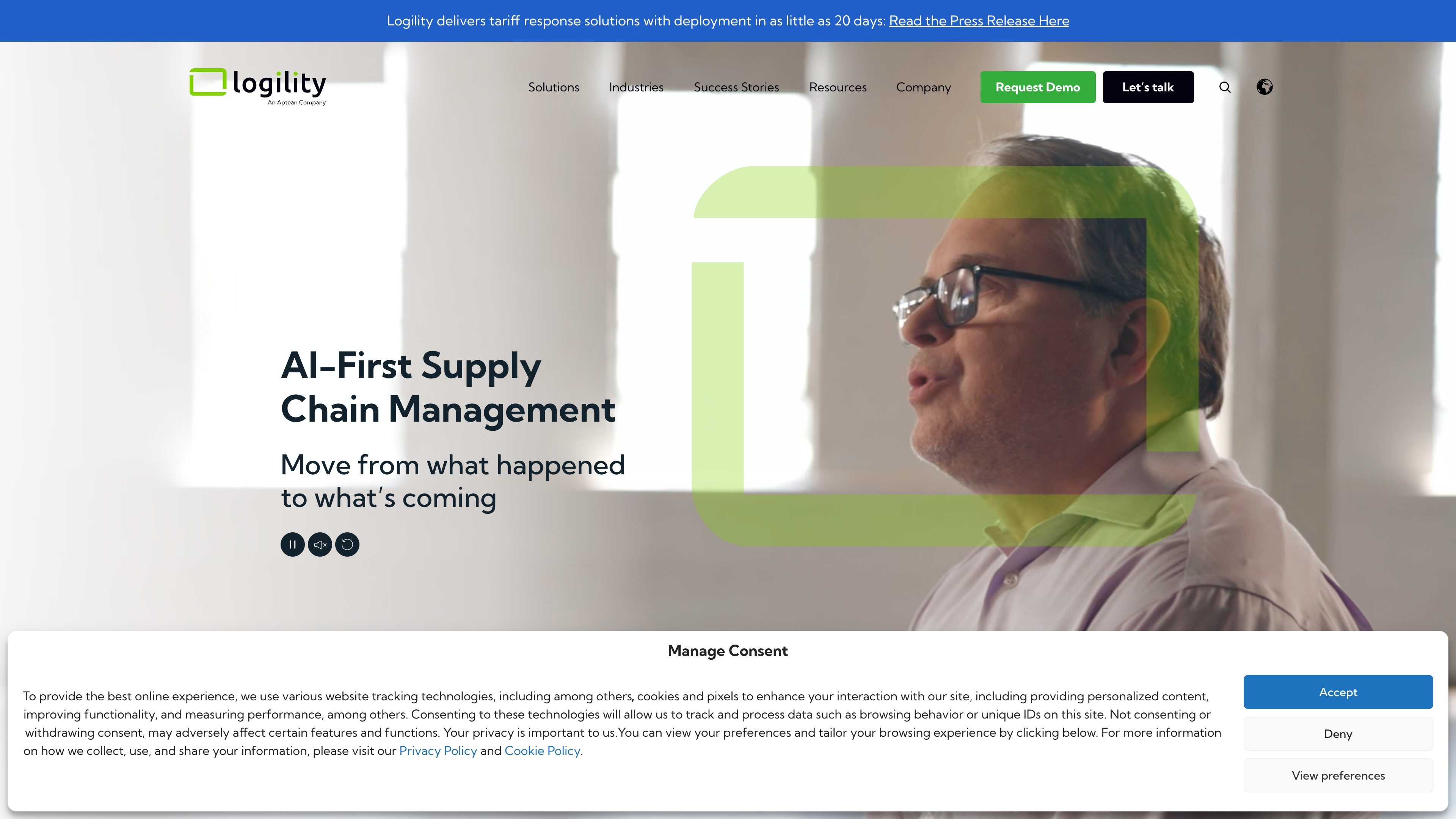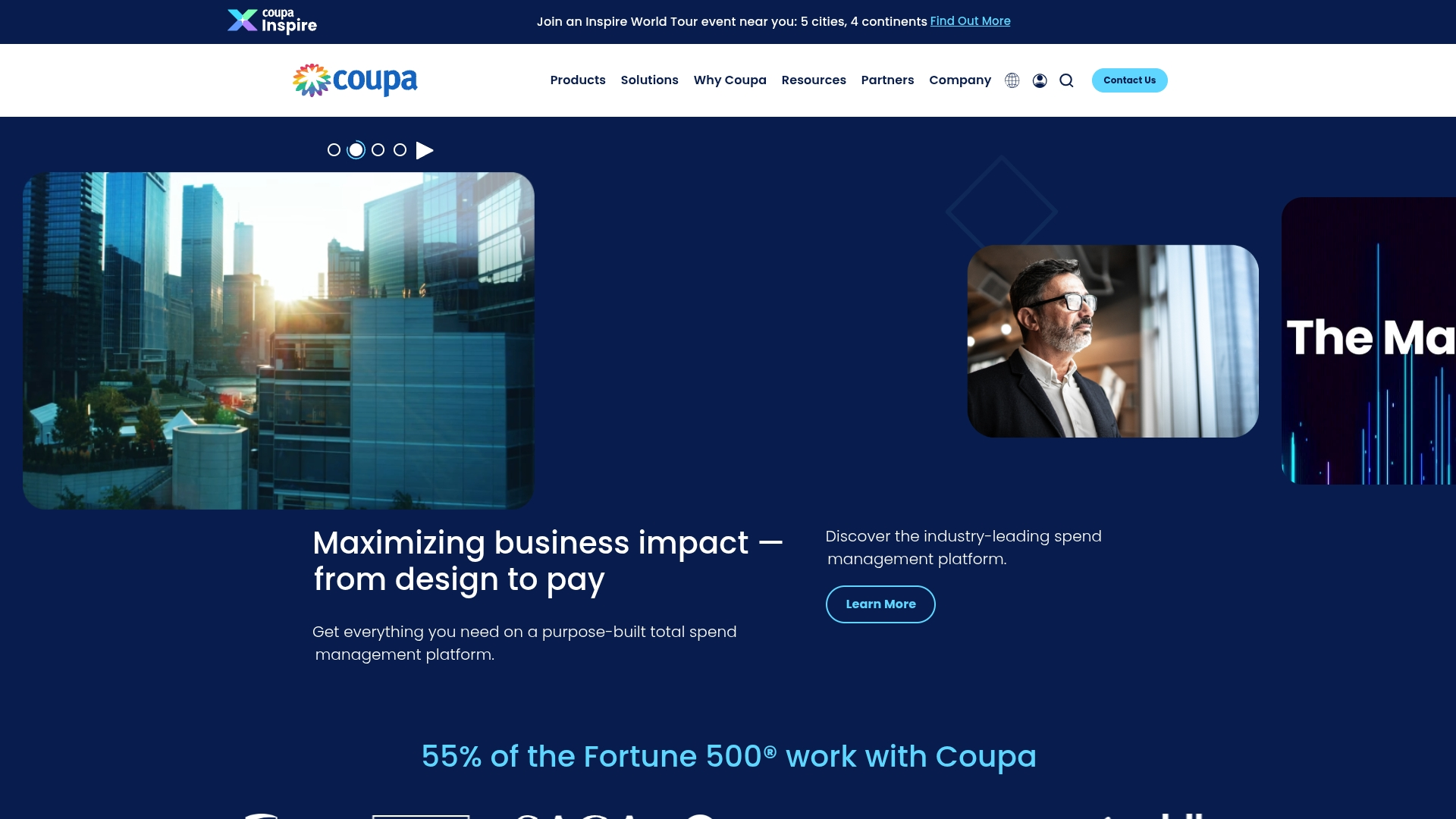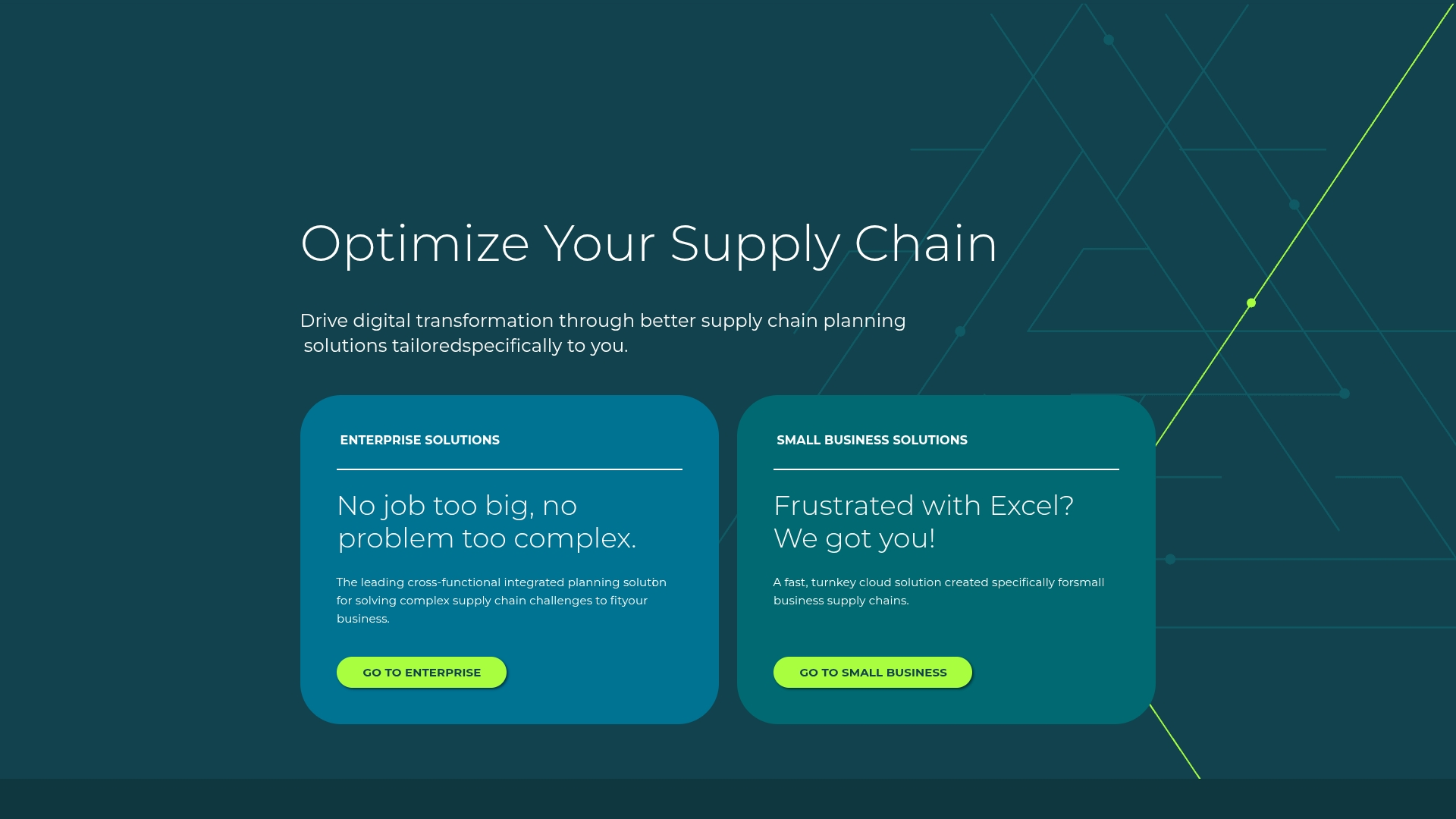Modern supply chains are complex and often difficult to manage with disconnected tools. AI-powered platforms deliver predictive insights that help forecast demand, optimize inventory, and surface risks before they escalate.
The greatest impact comes when those insights connect directly to execution systems, turning alerts into clear plans with tasks, owners, and timelines. With that connection in place, procurement, logistics, and operations teams stay aligned and act on the same real-time information.
This article covers what AI supply chain planning software does, the capabilities that matter most, and 10 leading platforms to consider. You’ll also find a 5-step framework to help choose the right solution for your team.
Try monday work managementWhat is AI supply chain planning software?
AI supply chain planning software centralizes data and uses machine learning to improve forecasting, planning, and execution. It connects demand signals, supplier performance, and customer trends to help teams make better decisions in real time.
These platforms automate complex analysis so your team can focus on strategy. They scan large datasets to forecast demand, optimize inventory, and identify risks before they disrupt operations. Over time, the system learns from your data to deliver sharper predictions and more reliable plans.
The result is faster, data-driven decisions and a supply chain that adapts quickly to market changes.
How AI improves supply chain planning
Traditional supply chain planning relied on historical data and often left teams reacting to problems. AI changes this by analyzing millions of signals at once, such as demand shifts, supplier capacity, and transportation conditions, to anticipate challenges before they happen.
With AI handling repetitive tasks like reordering or route optimization, teams can focus on higher-level planning. Instead of responding to crises, they can work proactively, adjusting plans with confidence.
When connected to a platform like monday work management, AI insights become clear tasks and workflows. This keeps every department aligned and ensures issues are resolved before they escalate.
Key capabilities to look for in supply chain planning systems
The best AI supply chain tools combine core functionality with advanced intelligence that gives your team an edge. Look for platforms that can:
- Real-time forecasting: Real-time forecasting shows what’s ahead and helps your team adjust immediately. Instead of relying on static reports, you can make decisions based on current conditions.
- Automated scenario modeling: Scenario modeling lets you test hundreds of “what-if” situations, such as supplier delays or demand spikes. and see the impact instantly. This helps you prepare response plans before disruptions occur.
- End-to-end visibility: Visibility ensures everyone works from the same data. A connected platform eliminates blind spots from spreadsheets or siloed systems, giving the whole team a single source of truth.
- Multi-level collaboration: Collaboration features replace email threads and disconnected updates. With all departments working together in one platform, progress is clear and handoffs run smoothly.
10 AI-driven supply chain planning platforms
Running a modern supply chain often feels like trying to solve a massive puzzle with half the pieces missing. AI-powered tools are changing that reality, bringing incredible predictive power to our fingertips. They sift through mountains of data to enhance demand management, optimize inventory, and flag disruptions before they become full-blown crises.
The real magic happens when these intelligent insights fuel coordinated action. By connecting these tools to a central platform like monday work management, we can instantly turn an AI alert into a clear plan. This ensures that from procurement management to logistics, everyone is aligned and executing on the same real-time information, together.
Let’s get your team equipped with the right tech. Here are the top AI tools that help turn supply chain complexity into a powerful competitive advantage for your entire crew.
1. monday work management

monday work management helps supply chain teams turn AI insights into coordinated plans with owners, due dates, and clear status. The platform integrates with ERPs, logistics systems, and forecasting tools to centralize work, automate handoffs, and maintain real-time visibility.
Best for: Teams of any size that need a flexible, visual platform to connect people, processes, data, and AI insights in one place.
Key features:
- Customizable supply chain dashboards that visualize inventory levels, supplier performance, and delivery status
- Automated workflows that trigger actions based on AI alerts from integrated supply chain tools
- Real-time collaboration across departments with centralized communication and document sharing
- 500+ integrations including ERP systems, logistics platforms, and specialized AI forecasting tools
Connect your entire tech stack with our extensive integration library, linking your supply chain data from ERPs, CRMs, and specialized logistics tools into one central workspace. This creates a single source of truth that eliminates data silos and keeps every team member on the same page.
Build custom, no-code automations that eliminate repetitive tasks and keep your supply chain moving without manual intervention. From triggering reorders when inventory hits threshold levels to alerting teams about potential delays, our automations turn complex processes into seamless workflows.
Leverage monday work management’s AI capabilities to transform supply chain data into actionable insights. Get intelligent suggestions for optimizing delivery routes, predicting potential bottlenecks, and summarizing complex supplier communications — all helping your team make faster, more informed decisions.
Pricing:
- Free: Basic features for up to 2 seats
- Basic: $9/seat/month with unlimited free viewers
- Standard: $12/seat/month with timeline views and automation
- Pro: $19/seat/month with advanced integrations and permissions
- Enterprise: Custom pricing with premium security and support
Considerations:
- Not a dedicated supply chain solution, requiring integration with specialized AI forecasting tools for advanced predictive capabilities
- Greatest value comes when teams invest time in customizing workflows to their specific supply chain processes
2. o9 Solutions
Through its AI-powered Digital Brain Platform, o9 Solutions transforms complex supply chain challenges into streamlined operations. This comprehensive supply chain platform serves large enterprises across industries like retail, manufacturing, and consumer goods, delivering real-time visibility and intelligent decision-making capabilities that traditional planning systems simply can’t match.
Best for: Large enterprises seeking an integrated, AI-driven supply chain platform that unifies demand, supply, and financial planning across their entire value chain.
Key features:
- Digital twin technology creates a comprehensive model of your entire enterprise using an Enterprise Knowledge Graph
- Real-time scenario planning enables “what-if” analyses to understand the impact of different decisions instantly
- Supply Chain Control Tower provides automated responses to potential disruptions with complete visibility into demand and supply
Pricing: Custom pricing based on implementation scope and requirements — contact o9 Solutions for a personalized quote
Considerations:
- Complex implementation process requires significant client resources and expertise, with setup costs ranging from $500,000 to over $5 million
- User interface can be confusing for some team members, potentially requiring additional training for non-technical users
3. SAP Integrated Business Planning
Leveraging the in-memory computing power of SAP HANA, SAP Integrated Business Planning delivers enterprise-grade supply chain planning solutions that unify forecasting, inventory optimization, and sales operations planning on a single cloud platform. The solution enables real-time scenario planning and AI-driven analytics, making it ideal for large organizations with complex, multi-location supply chains. With over 2,900 companies worldwide relying on SAP IBP, it’s designed to transform fragmented planning processes into synchronized, data-driven decision-making.
Best for: Enterprise organizations seeking to integrate financial and operational planning across departments while leveraging advanced AI and machine learning for supply chain optimization.
Key features:
- Real-time demand sensing with machine learning algorithms that automatically correct outliers and improve forecast accuracy across short and long-term horizons
- Integrated sales and operations planning (S&OP) that enables collaborative scenario planning and what-if simulations across departments
- Supply Chain Control Tower providing end-to-end visibility with intelligent alerts for proactive disruption management
Pricing:
- Pricing follows SAP’s consumption-based model through SAP Business Technology Platform Enterprise Agreement (SAP BTPEA)
- Contact SAP sales for specific pricing as costs vary based on usage and modules selected
- Free 90-day trial available with limited features
Considerations:
- Implementation complexity often requires specialized consultants, extending deployment timelines and increasing total cost of ownership
- Some legacy SAP APO functionalities like Production Planning and Detailed Scheduling aren’t fully replicated, potentially requiring additional SAP S/4HANA licenses
4. Kinaxis Maestro
With its groundbreaking concurrent planning engine, Kinaxis Maestro revolutionizes supply chain orchestration by synchronizing demand, supply, inventory, and capacity in real-time. This AI-infused platform targets large multinational companies across automotive, aerospace, life sciences, and high-tech industries who need lightning-fast responsiveness to supply chain disruptions. Unlike traditional linear planning approaches, Maestro’s concurrent methodology enables millions of scenario simulations in seconds, making it the go-to choice for organizations managing complex, volatile supply chains.
Best for: Large enterprises requiring agile, end-to-end supply chain orchestration with real-time visibility and AI-driven decision intelligence across complex global operations.
Key features:
- Concurrent planning engine that simultaneously models all supply chain variables for instant impact analysis
- AI-powered scenario planning with unlimited “what-if” simulations and explainable recommendations
- Supply chain data fabric that automatically ingests structured and unstructured data from internal and external sources
Pricing: No pricing information is publicly available. Contact Kinaxis directly for custom enterprise quotes.
Considerations:
- Implementation complexity may require significant IT resources and extensive training for comprehensive platform adoption
- Robust feature set might be considered overkill for smaller companies with less complex supply chain requirements
5. Blue Yonder
The AI-powered Luminate® platform from Blue Yonder transforms complex supply chains into intelligent, self-orchestrating networks. The company stands out among supply chain management software companies by focusing exclusively on end-to-end supply chain optimization, making it the go-to choice for large enterprises managing intricate global operations. With backing from Panasonic and over 3,000 customers across 76 countries, Blue Yonder brings serious firepower to supply chain planning challenges.
Best for: Large enterprises with complex, multi-location supply chains that need AI-driven forecasting and real-time orchestration across their entire network.
Key features:
- Cognitive demand planning software with machine learning that factors in campaigns, pricing, and promotions for more accurate forecasts
- Luminate Control Tower providing end-to-end visibility and exception-based management across the entire supply chain
- Objective-led, range-based planning using patented solvers to evaluate multiple future scenarios and recommend optimal solutions
Pricing: Contact Blue Yonder directly for pricing information, as costs vary based on enterprise requirements and implementation scope.
Considerations:
- High implementation complexity and costs may create barriers for smaller organizations
- Heavy dependence on data quality means the platform’s effectiveness relies on consistent, real-time data feeds from multiple sources
6. Oracle Fusion Cloud SCP
Oracle Fusion Cloud SCP provides comprehensive supply chain planning through a unified, cloud-native platform that connects demand insights with supply constraints. The platform specializes in AI-powered forecasting and constraint-based planning, making it ideal for large enterprises managing complex, multi-tier global supply chains. Oracle’s integrated approach breaks down traditional silos between planning functions, enabling real-time collaboration across your entire organization.
Best for: Large enterprises seeking an integrated supply chain software solution that unifies demand management, supply planning, and production scheduling with embedded AI capabilities.
Key features:
- Constraint-based planning that accounts for real-world limitations like manufacturing capacity, materials, and labor availability
- Machine learning-powered demand forecasting that incorporates multiple data inputs for improved accuracy
- Integrated Business Planning and Execution (IBPX) that connects planning with finance and operations in a unified data model
Pricing:
- Contact Oracle sales for custom pricing quotes
- Subscription-based model with typical three-year terms
- Minimum user count requirements apply
- Pricing varies based on modules selected and contract terms
Considerations:
- Implementation can be complex and time-consuming, particularly for advanced features like constraint-based planning
- Steep learning curve may require significant training investment for teams to use the platform effectively
7. Anaplan for supply chain
By replacing scattered spreadsheets with a unified, real-time command center, Anaplan transforms complex supply chain planning. The platform specializes in connected planning across demand, inventory, and production, making it ideal for large enterprises managing global supply networks. With its powerful scenario modeling capabilities, teams can instantly see how changes ripple through their entire supply chain.
Best for: Large enterprises needing to unify complex supply chain planning across multiple departments and geographies with real-time scenario modeling.
Key features:
- Advanced demand forecasting using machine learning algorithms and historical data analysis
- Real-time scenario modeling to analyze “what-if” situations and supply chain disruptions
- End-to-end supply chain visibility connecting procurement, production, and fulfillment planning
Pricing:
- Pricing is customized based on organization size, number of users, and required features
- Contact Anaplan directly for detailed pricing information
Considerations:
- High implementation costs and complexity may be prohibitive for smaller organizations
- Performance can lag with extremely large datasets, and the initial setup requires specialized expertise
8. Logility Platform
The AI-powered Digital Supply Chain Platform from Logility transforms supply chain chaos into intelligent decision-making. The platform specializes in predictive analytics and automated planning across complex global networks, making it ideal for enterprises managing multi-echelon inventory and intricate distribution channels.
Best for: Large enterprises seeking AI-driven supply chain management tools that integrate seamlessly with multiple ERP systems while providing end-to-end visibility across complex distribution networks.
Key features:
- DemandAI+ technology for predictive forecasting that incorporates causal factors like pricing and market dynamics
- Multi-echelon inventory optimization with digital twin capabilities for testing supply chain strategies
- Integrated business planning (IBP) and sales & operations planning (S&OP) for cross-functional alignment
Pricing:
- Pricing is available upon request, as it is customized based on the scope of the implementation.
Considerations:
- Steep learning curve and complex initial setup process that can be challenging for new users.
- Customization capabilities may be limited, requiring significant IT resources for implementation.
9. Coupa supply chain design and planning
Coupa turns spend management into a source of supply chain intelligence, offering some of the most powerful supply chain software tools on the market. Thanks to its acquisition of LLamasoft, Coupa delivers AI-powered planning and digital twin solutions that help you transform your complex network into a competitive advantage. While individual companies don’t manage millions of suppliers, Coupa connects you to its massive business network of over 10 million buyers and suppliers, providing unique community-generated insights.
Best for: Large enterprises seeking to integrate spend management with advanced supply chain planning and tap into a vast supplier network.
Key features:
- Digital twin modeling for comprehensive scenario planning and network optimization
- AI-powered demand forecasting that integrates internal data with external market factors
- Inventory and transportation optimization to balance service levels and costs
- Rapid scenario analysis (Rapid Network Explorer) for quick decision-making
- Seamless integration with procurement and finance for unified operations
Pricing: Pricing for Coupa’s supply chain design and planning suite is customized for enterprise needs and available upon request. The pricing below is for suppliers participating in the Coupa network.
- Registered: Free – includes business profile, orders, e-invoices, catalogs, payments, and sourcing events
- Verified: $549/year – adds Verified Badge and priority search ranking
- Premium Support: Starting at $499/year – includes 6+ hours of support annually with 24/5 Zoom assistance
- Advanced: $4,800/year – includes customizable invoice views, single sign-on, integrated accounting, and exclusive supplier community access
Considerations:
- The core enterprise software is a significant investment, making it less suitable for smaller businesses
- Advanced features require a notable learning investment and may need professional implementation support
10. Arkieva Enterprise
Arkieva Enterprise delivers comprehensive supply chain planning software that transforms forecasting accuracy and operational efficiency for mid-to-large manufacturers. The platform specializes in creating a unified “One-Plan” S&OP system that synchronizes demand, inventory, and supply planning across global operations. With over 30 years of domain expertise, Arkieva stands out among supply chain planning companies for its highly configurable approach and consultative implementation methodology.
Best for: Fortune 500-1000 manufacturers seeking a consultative approach to supply chain planning with deep customization capabilities and proven ROI results.
Key features:
- Integrated demand, inventory, and supply planning with collaborative forecasting and statistical algorithms
- Orbit platform with in-memory engine for rapid what-if scenario analysis and real-time simulations
- Arkieva Beacon centralized command system for visual S&OP workflow management and cross-functional collaboration
Pricing:
- Pricing information is available upon request.
Considerations:
- AI capabilities rely more on traditional statistical methods rather than cutting-edge machine learning
- Enterprise solution may require significant IT resources and dedicated supply chain teams for optimal implementation
5 steps to choose the right supply chain platform
Choosing a supply chain platform is a strategic decision that shapes how your team operates. The right solution creates one connected system where tasks, data, and teams align, enabling faster and more confident execution.
Step 1: Define your team’s immediate and long-term needs
Identify the most pressing challenges today and the goals for the next few years. Consider process bottlenecks, decisions still based on gut feel, and upcoming changes in product mix, supplier networks, or compliance requirements. Ask questions like:
- What specific processes are causing the most delays or errors right now?
- Which supply chain decisions currently rely on gut feel rather than data?
- How will your product mix, supplier base, or geographic footprint change over the next two years?
- What compliance or sustainability requirements are on the horizon?
Step 2: Prioritize AI capabilities that actually help
Focus on AI capabilities that improve outcomes, such as more accurate demand forecasting, automated risk alerts, and clear explanations for recommendations. Look for features that directly support your workflows instead of creating noise.
Step 3: Evaluate how it connects with your other tools
Your platform should connect to existing systems like ERP (enterprise resource planning), logistics, and finance. Confirm available APIs or prebuilt connectors, and check how real-time the data sync will be. Integration is critical for creating one reliable source of truth.
Step 4: Verify data security and governance
Protecting sensitive supply chain data is essential. Evaluate encryption standards, access controls, audit logs, and vendor certifications like SOC 2 or ISO 27001. Strong governance builds trust and simplifies compliance.
Step 5: Assess vendor partnership and support
Select a provider with a roadmap for innovation and responsive support. Ask how pricing scales with usage, how new features are introduced, and what implementation assistance is available. The best platforms grow with your business.
Why real-time collaboration matters in supply chain management solutions
When supply chain teams work in disconnected systems, information delays lead to errors and missed opportunities. Procurement, logistics, and manufacturing need to see the same data to stay coordinated.
A single shared platform keeps every stakeholder aligned. Real-time updates allow teams to track progress, identify risks, and act quickly on the same information. This reduces lead times, strengthens supplier relationships, and helps resolve blockers before they escalate.
Collaboration at this level transforms operations from reactive to proactive. Teams move faster, make better decisions, and build a supply chain that is resilient as well as efficient.
Keeping your data secure and compliant
Working with global suppliers and partners requires strong data security. Protecting contracts, schedules, and customer information builds trust and keeps operations running smoothly.
A platform like monday work management includes enterprise-grade protection to support your compliance and risk management needs. Role-based access controls keep sensitive information restricted, while detailed audit trails make regulatory reporting easier.
These features free up your team to focus on performance instead of worrying about security. With reliable safeguards in place, you can strengthen supplier relationships and deliver better customer experiences.
Demand and supply planning tools in action
Connected supply chain data helps teams move from reacting to problems to planning with confidence. Procurement, manufacturing, and sales all gain visibility into the same real-time information, reducing delays and miscommunication.
With monday work management, teams can set automatic alerts to reorder stock, monitor material levels across facilities, and align production schedules with supplier deliveries. This ensures every department has the information needed to act with clarity.
Customizable dashboards turn complex data into simple visuals, giving teams the context they need to make fast, informed decisions.
Unlocking scalability and enterprise-grade integrations
A supply chain platform should scale as your business grows. Whether you are adding new teammates or expanding into new markets, the right system adapts without slowing progress.
The monday work management platform integrates with ERPs, financial systems, and logistics tools to unify data in one place. The API-first approach keeps information synced in real time, creating a single source of truth across your tech stack.
With integrations and automation in place, teams eliminate silos, speed up processes, and operate with enterprise-grade security. This creates a clear, connected foundation for long-term growth.
Next steps with AI in supply chain planning
AI forecasting is valuable, but its true impact comes when insights guide coordinated action. A connected platform ensures that logistics, finance, and procurement teams all work from the same intelligence.
When AI flags a potential disruption, monday work management can trigger automated workflows to assign tasks, alert stakeholders, and launch response plans. Predictions translate directly into execution, keeping teams ahead of challenges.
Teams that connect AI insights with monday work management move from reactive firefighting to proactive planning.
Get started with monday work management today to build a supply chain that is faster, more aligned, and more resilient.
FAQs
Which software is best for supply chain management in 2025?
Choosing the best software for supply chain management depends on your company size and goals. Large enterprises often need full-suite platforms, while many teams benefit from flexible solutions like monday work management that connect data, people, and AI insights in one place.
How does AI enhance traditional supply chain planning software?
AI strengthens forecasting, highlights potential risks, and automates routine tasks. This helps teams make quicker, more accurate decisions and stay ahead of disruptions.
What types of supply chain management software exist?
Most platforms fall into four categories: planning, execution, visibility, and supplier relationship management. Many modern tools combine these functions to reduce silos.
How can supply chain software improve inventory management?
Accurate demand forecasting and automated alerts ensure stock levels stay balanced. Teams avoid both shortages and excess inventory while meeting customer needs.
What security features should supply chain planning software include?
Strong platforms include encryption, role-based permissions, audit logs, and multi-factor authentication. These protections safeguard sensitive supply chain data and simplify compliance.
Can small businesses benefit from AI supply chain planning tools?
Yes. Affordable, flexible platforms with automation and integration features give smaller teams the same ability to streamline processes and compete effectively.


